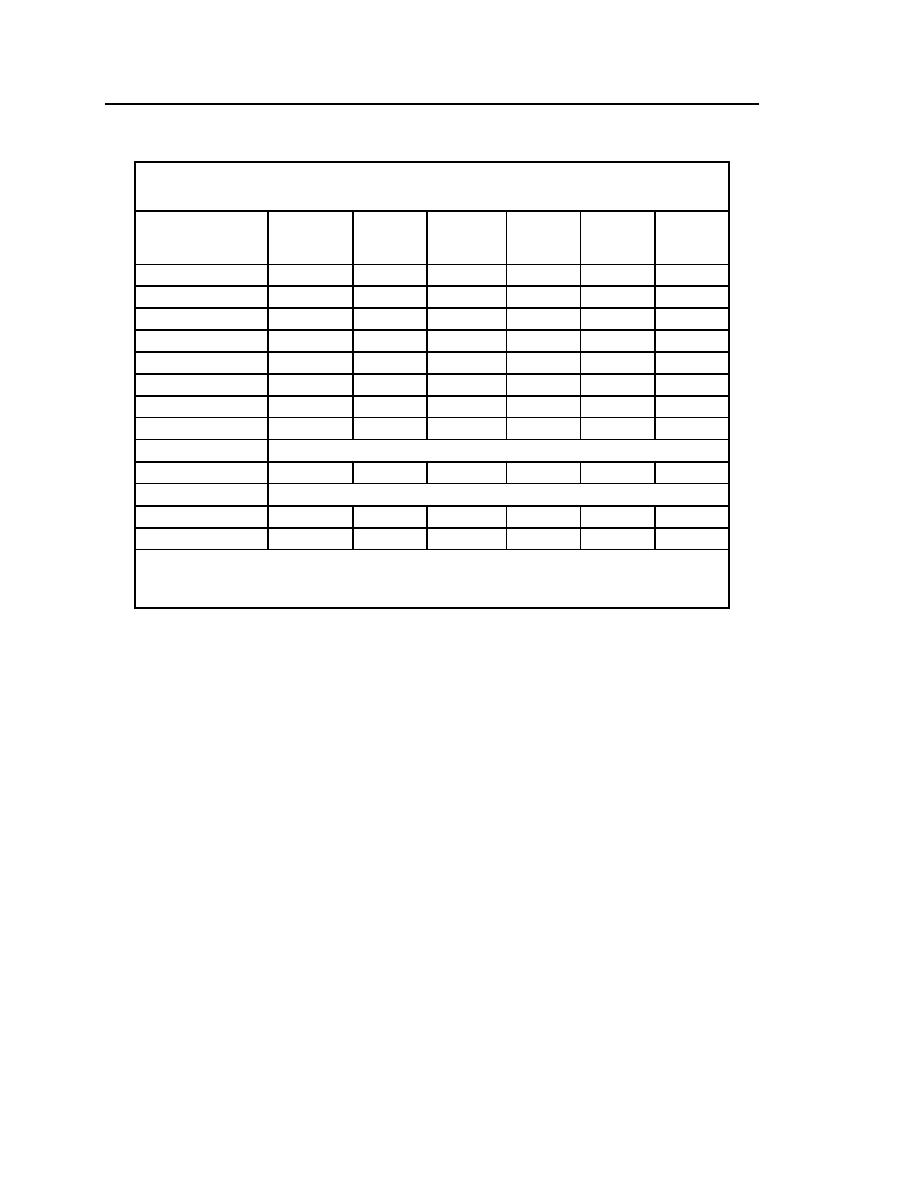
14
ERDC/CRREL TR-02-13
Table 3. Commanders' ratings (by location) of mission impact due to aircraft
damage during deicing.
% of
No. of
moderate % of high
moderate No. of high
% of low
No. of low
ratings
ratings
ratings
ratings
ratings
Location
ratings
Belgium
0
0
100
0
0
1
Germany
2
1
79
14
7
11
Korea*
2
1
71
29
0
5
Fort Drum, NY
2
1
0
67
33
0
Fort Campbell, KY
0
1
75
0
25
3
Fort Wainwright, AK
0
0
100
0
0
1
Fort Belvoir, VA
0
1
0
0
100
0
Fort Eustis, VA
0
0
100
0
0
1
USAR
Fort Sheridan, IL
0
0
100
0
0
2
National Guard
Indiana
0
0
100
0
0
1
Minnesota
0
0
100
0
0
1
* Two returned questionnaires from HQ, 17th Aviation Brigade, Seoul, Korea.
Note: The total number of ratings per location corresponds to the number of commanders'
questionnaires returned from each location.
c. Forecasted icing conditions in the mission flight plan.
By the 50% criterion, forecasted icing conditions in the flight plan have a
significant impact on mission accomplishment in Belgium, Germany, and Korea,
at Forts Drum, Wainwright, Belvoir, and Eustis, and in Indiana (Table 4). The
SHAPE (Belgium) aircraft fly weekly to Germany and the United Kingdom, and
in winter encounter light to moderate icing on almost every mission, and
occasionally high-altitude unforecasted icing. The commander of the SHAPE
flight detachment rated the impact of icing conditions in the flight path as
moderate, however, perhaps because his aircraft are equipped with blade deicers
as well as color weather radar and storm scopes. The 421st MEDEVAC
Battalion, V Corps, in Wiesbaden, Germany, flies the same aircraft (UH-60A),
but its experience with the deice/anti-ice equipment on its aircraft is less
satisfactory, leading the 421st commander to rate icing conditions as having a
high impact on mission accomplishment. He comments that icing forecasts
generally are not very accurate, and that deice or anti-ice systems on his aircraft
test fine on the ground but fail in flight.



 Previous Page
Previous Page
